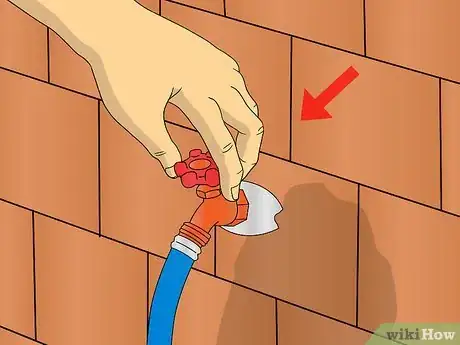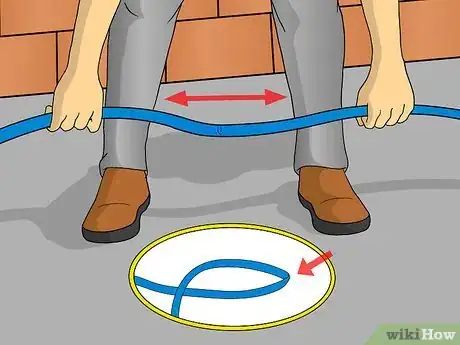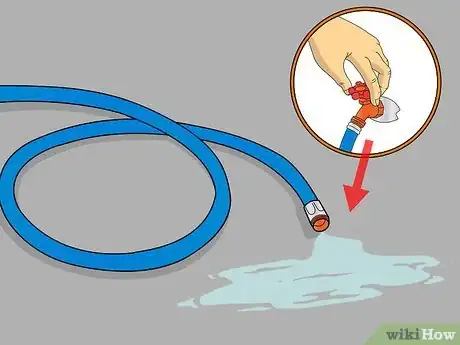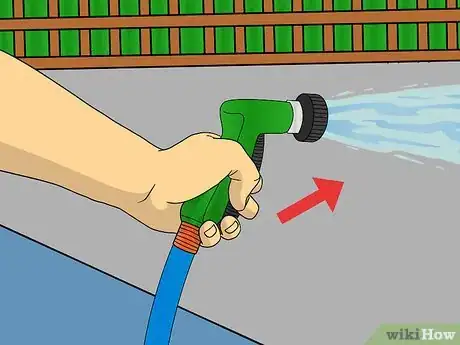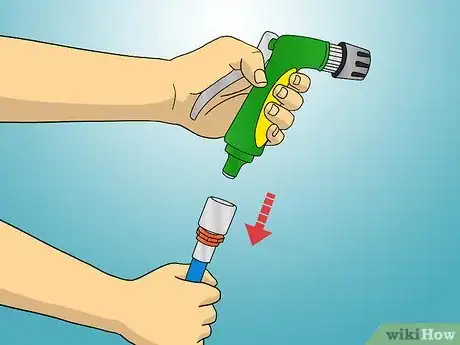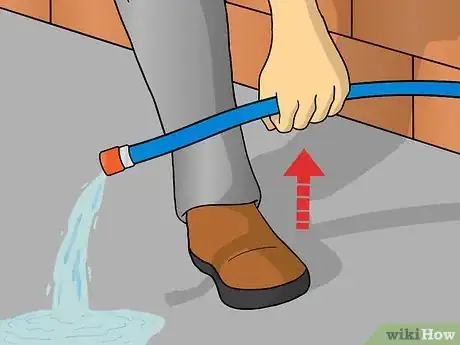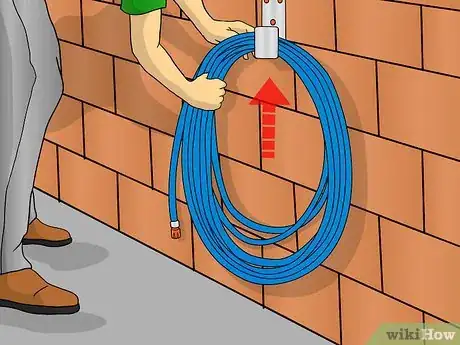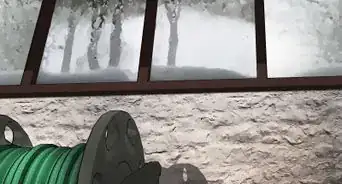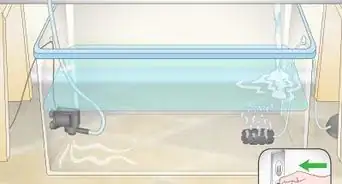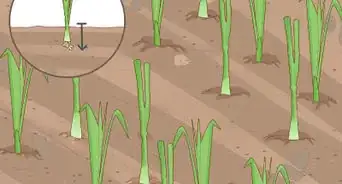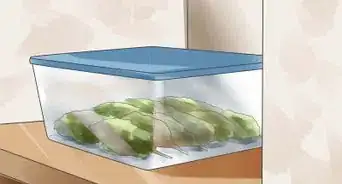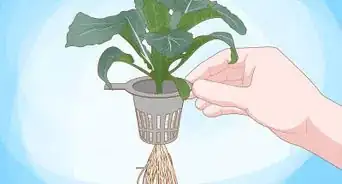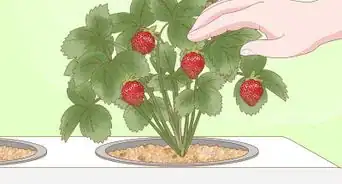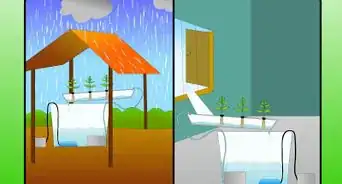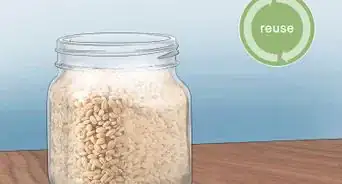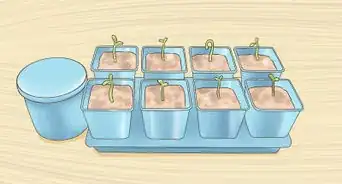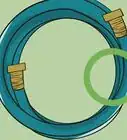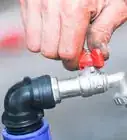X
wikiHow is a “wiki,” similar to Wikipedia, which means that many of our articles are co-written by multiple authors. To create this article, volunteer authors worked to edit and improve it over time.
This article has been viewed 81,057 times.
Learn more...
During times of cold weather, your garden hose can freeze if you leave it outside, especially if water remains inside the hose. When your garden hose freezes, the expansion of the water inside your hose can cause holes to form and weaken the lining of your hose. Additionally, a frozen, connected garden hose can eventually lead to problems with water pressure in the water pipes and water lines residing inside your home.
Steps
-
1Turn off the outside water spigot your garden hose is connected to. This will prevent any additional water from entering the hose from the water pipe.
-
2Remove any kinks in the garden hose. This procedure will remove any blockage of water in the garden hose and allow the water to flow freely. Kinks can also cause holes in the lining of your garden hose if they are not straightened out.
- Walk along the length of your garden hose starting from the water spigot and straighten out every kink along the way until you reach the opposite end.
Advertisement -
3Depress the remaining water from inside of your garden hose. This will prevent any leftover water inside the garden hose from freezing and damaging the lining.
- If you have a spray nozzle with a handle attached to your hose, depress the handle to spray out any remaining water from the inside of the hose.
- Remove any attachments from the head of your garden hose, such as a sprinkler head of spray nozzle, and allow any remaining water to drain from the open mouth of the hose.
-
4Disconnect your garden hose completely from the outside water spigot. This will prevent the end of the hose from freezing to the spigot and allow you to store the garden hose during cold weather.
-
5Drain the hose entirely of water. This procedure will help remove any water that has collected in the middle sections of your garden hose.
- Grab the end of the garden hose you recently disconnected from the spigot, keeping the mouth of the hose elevated to allow any remaining water to drain down the length of the hose.
- Keep each section of the garden hose elevated as you continue to walk down the length of the garden hose. This will allow the water to drain fully out of the other end of the hose when you reach the other side.
- When you reach the end of the hose, keep the hose elevated until the water starts to drip slowly from the mouth of the hose or until it stops dripping completely.
-
6Wind the garden hose into a circular shape. This will prevent the hose from becoming bent or kinked for the duration of storage.
- Bend the end section of the hose into a loop that spans roughly 3 feet (0.91 meters) in diameter.
- Continue to wind the remaining length of the hose in the same direction of the loop while maintaining the size of the loop.
-
7Store your looped garden hose in a warm location. This will prevent it from cracking or freezing even without water remaining inside the hose.
- If your garage or outside shed reaches freezing temperatures, place your garden hose in your basement or another warm room inside your home.
- Place your garden hose in a large bucket or hang it on a garden hose hanger. You can use any storage method you prefer, as long as it prevents your hose from becoming kinked.
Advertisement
Community Q&A
-
QuestionHow do you thaw out a garden hose with ice already in it?
 ChrisTop AnswererSimply turn a hair dryer onto the lowest warm setting (if it's too hot, you can melt the rubber) and move it over the frozen part of your hose, about two to three inches (5-7.5 cm) away.
ChrisTop AnswererSimply turn a hair dryer onto the lowest warm setting (if it's too hot, you can melt the rubber) and move it over the frozen part of your hose, about two to three inches (5-7.5 cm) away. -
QuestionAt what temperature should I unhook hoses?
 Addison SmithCommunity AnswerAnything under freezing temperatures. If they also have a cover, put that onto the spigot to stop the freezing.
Addison SmithCommunity AnswerAnything under freezing temperatures. If they also have a cover, put that onto the spigot to stop the freezing. -
QuestionJust disconnected a garden hose and there's ice in the spigot.
 Addison SmithCommunity AnswerUnfortunately, this can happen. Get a cover for the spigot and that should stop the water from freezing.
Addison SmithCommunity AnswerUnfortunately, this can happen. Get a cover for the spigot and that should stop the water from freezing.
Advertisement
About This Article
Advertisement
